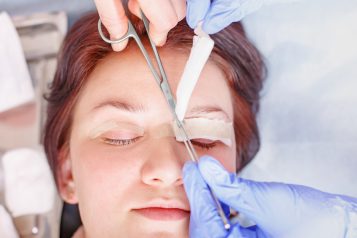 Photo Credit: Photo courtesy of Dr. Kalasho
Photo Credit: Photo courtesy of Dr. Kalasho
HB: How does the procedure/treatment work?
Xrays are taken to determine the extent of the decay. Impressions of the patients are taken, as well as photos so that we can get an accurate study model and shade choice for the newly fabricated veneers and crowns. We use these study models to build beautiful esthetic temporaries, as well as make sure the patient’s bite and teeth position are adequate for the new veneers in terms of length, width, and shape.
HB: Who is the best candidate for this procedure?
Generally, veneers or crowns that begin to look fractured, discolored, or appear as though they are separating need to be replaced. Veneers, like anything cosmetic, do not last a lifetime but need to be adequately maintained to get the most out of the investment. That means seeing your dentist regularly for checkups, cleanings, and x-rays. You also want to always maintain excellent oral hygiene to keep your smile vibrant, and long-lasting. If it has been over 5 years since you last had photos taken of your veneers, or even checked out by a dental professional, make sure you make that appointment today to evaluate them.
 Photo Credit: Photo courtesy of Dr. Kalasho
Photo Credit: Photo courtesy of Dr. Kalasho
HB: How does this treatment compare to others of the same nature?
This treatment can vary in complexity. At times some of our patients just want their veneers replaced because they want them to appear more natural-looking, or a different shade, and in that case, the treatment is straightforward and does not require a lot of cavity removal. However, some veneers or crowns can be extremely decayed or broken down, requiring a lot more restructuring.
HB: What does recovery look like?
Most cases, however, despite its complexity, are done and completed in two visits and require no downtime from work or school. The best part is, the entire time, you look absolutely normal, if not better than when the treatment was started.
For more information, visit Dr. Brian A. Levine's social media:

























